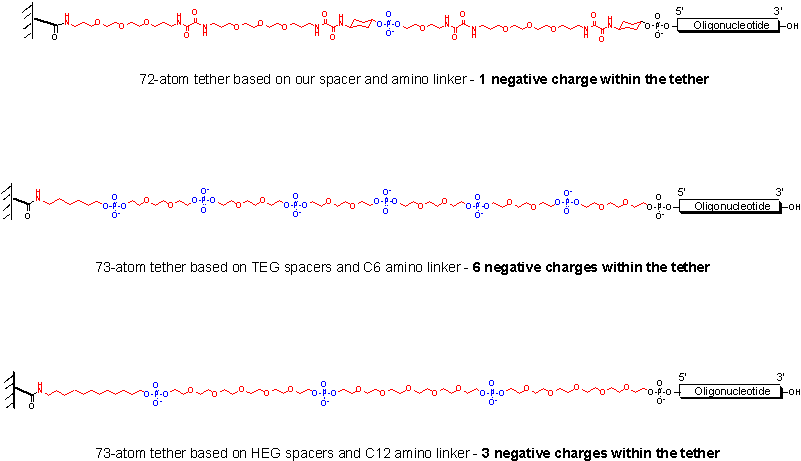
Comparison of long tethers
Since our amino linkers and spacers possess
extraordinarily long arms, we are able to synthesize long tethers with fewer
incorporations of charge from phosphodiester bonds. It has been shown that
tethers of immobilized oligonucleotides with low negative charge and having a
length of at least 40 atoms are optimal for obtaining the highest hybridization
yields (Shchepinov et al., Nucleic Acids Res., 1997, 25,
1155). Using our longest spacer and amino linker we can synthesize a
72-atom tether possessing one negative charge. In order to match this length we
would need 6 couplings of triethyleneglycol (TEG) spacers plus one C6
amino-linker coupling or 3 couplings of hexaethyleneglycol (HEG) spacers plus
one C12 amino-linker coupling.
It is reasoned that a decreased negative charge on the tether
reduces unfavorable electrostatic repulsion to the target DNA , thus maximizing
the extent of hybridization. In our example, our tether has the least negative
charge and possesses the same optimal length as the others. Furthermore, the
synthesis of our tether requires only 2 couplings to attain the desired length,
versus 7 couplings for the TEG-based tether and 4 couplings for the HEG-based
tether. Fewer couplings not only ensure maximal synthetic yield, but also
produce tethers that are less expensive and faster to make!

FOR RESEARCH USE ONLY